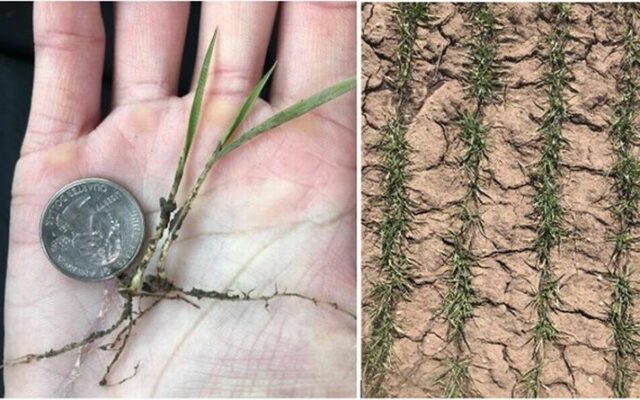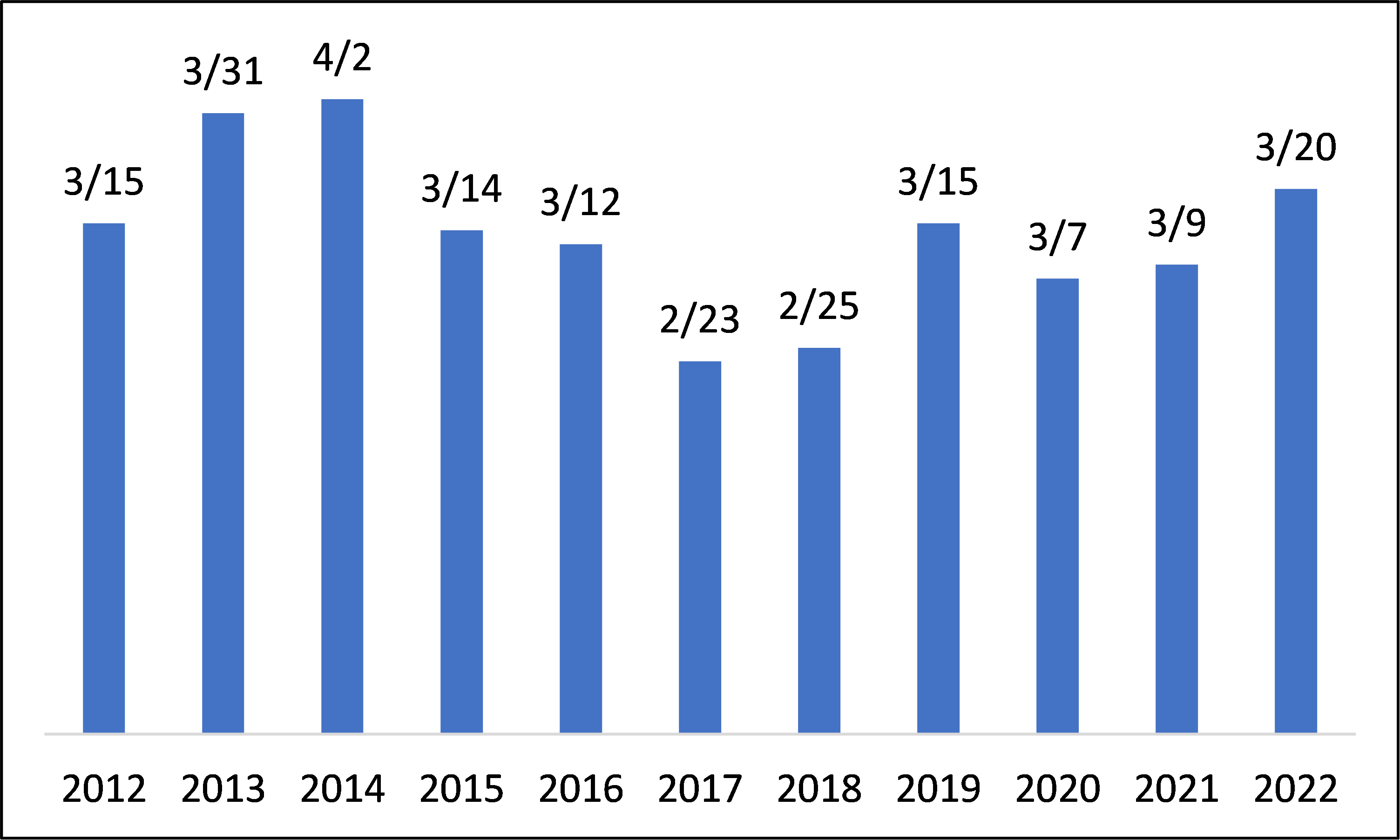Evaluating wheat stands and spring management

Late fall planting coupled with a cold, harsh winter has farmers wondering how their wheat crop will fair once it starts to green up. Typically, we want to see two to three tillers in the fall before wheat goes dormant. However, in many cases, only the coleoptile had emerged last fall before a killing frost occurred. With the lack of tiller and root development, farmers should scout and evaluate their crops before making any decisions about destroying their wheat to plant another crop.
It is important to note that wheat is resilient and can tolerate very cold temperatures. Overwinter survival will vary across each field as topography and residue coverage can vary. Areas with taller residue (stubble) as well as low areas can trap snow, which provides additional insulation. However, water ponding and icing in low areas can suffocate the crown. Make sure you check the entire field, not just headland areas.
Timing of scouting is important. Wheat breaks dormancy after seven consecutive days of positive growing degree day (GDD) accumulation. Michigan State University Enviroweather stations can be used to track GDDs near you. Note: This is not the same method as tracking GDDs during the growing season. For more information on how to use Enviroweather to calculate GDDs for green up, check out the short and useful YouTube video below.
Green up in winter wheat will typically occur in March in lower Michigan, but this can vary depending on location and the weather pattern in a given year. As an example, Figure 1 shows the date of green up (i.e., the seventh day in a row when temperatures were warm enough to accumulate GDDs) for Coldwater, Michigan.

Crop scouting efforts should occur after green up begins. If you want to know if a crown is alive earlier than that, you can dig some plants, bring them inside, clip the top growth off and keep them watered. You should see the plant begin to grow in four or five days.
Scouting procedure
You cannot scout fields from your pickup. Get out and walk each field and conduct a set of stand counts that represents the entire field. When conducting stand counts, make sure to:
- Measure 3 feet of row.
- Count and record the number of plants.
- Calculate the average number of plants per foot.
- Count in three to five locations per field.
It is important to count plants in 3 feet of row as wheat is too variable if you only count 1 foot. Use a yard stick and lay it down next to a row and begin counting. Try not to purposely count only good or bad areas as you want to get a good average in order to make proper management decision. Count 3 foot of row in three to five locations in each field and use the average to determine the plant stand per 1 foot of row. For stand counts, only count live plants, not tillers. However, make note of how many tillers you have per plant as that will help you adjust nitrogen (N) timing. Reference Table 1 for an estimation of yield potential based on plant stand counts.
| Table 1. Plant stand counts for four row spacings and their relation to percent of yield potential. Adapted from Table 3-4 of the University of Kentucky Extension Bulletin ID-125, “A Comprehensive Guide to Wheat Production in Kentucky.” | ||||
|---|---|---|---|---|
| Plants per foot | Percent of yield potential | |||
| 6-inch rows | 7-inch rows | 7.5-inch rows | 10-inch rows | |
| 12-14 | 14-16 | 15-18 | 20-23 | 100 |
| 9-11 | 11-13 | 11-14 | 15-19 | 90-95 |
| 8-9 | 9-11 | 9-10 | 13-14 | 75-80 |
| 6-7 | 7-8 | 8-9 | 10-12 | 60-70 |
| 3-6 | 4-6 | 4-7 | 5-9 | 40-50 |
Early nitrogen
Degree of tillering is a useful tool in determining the timing of spring nitrogen applications in wheat. Ideally, wheat should produce two to three tillers in the fall as fall tillers typically provide higher yield potential compared to spring-developed tillers. In fields with two to three tillers, it is recommended to make a single nitrogen application at Feekes 5-6 (prior to jointing). In fields with less than two to three tillers, put on 50-60 pounds of actual nitrogen at green up, with the balance put on at Feekes 5-6 (prior to jointing) based on yield goal. Table 2 contains Michigan State University Extension fertilizer recommendations for nitrogen rates on wheat based on yield goal. Be sure to use a realistic yield goal taking into account the current crop condition.
| Table 2. Recommended nitrogen rates for winter wheat based on the formula N = -13 + (1.33 x yield potential). | |
|---|---|
| Yield potential (bu/a) | Nitrogen (lbs/a) |
| 60 | 67 |
| 70 | 80 |
| 80 | 93 |
| 90 | 107 |
| 100 | 120 |
| 110 | 133 |
| 120 | 147 |
When making green up applications, make sure frost has gone out, then apply when overnight temperatures get down to 20-25 degrees Fahrenheit and apply early in the morning to avoid damage to the field. When possible, time the application so that the ground will thaw the next day, reducing the chance of fertilizer washing off frozen ground in a rain event. Pay attention to the weather forecast and do your best to keep your nitrogen on your field.
Scout for weeds
Late planted wheat with little or no tillering may be subject to increased weed pressure. The lack of early canopy cover may allow winter annuals to germinate and get a foothold whereas timely planted wheat may be able to overcome and outcompete these weeds. When conducting stand counts, make note of weed pressures and determine a timely weed control plan. For more information on weed control in wheat visit the Weed Control page of the MSU Extension Wheat website.
For questions about evaluating your wheat stands, please contact Dennis Pennington, MSU wheat systems specialist, at [email protected] or 269-832-0497. For more information, visit the MSU Extension Wheat website.

